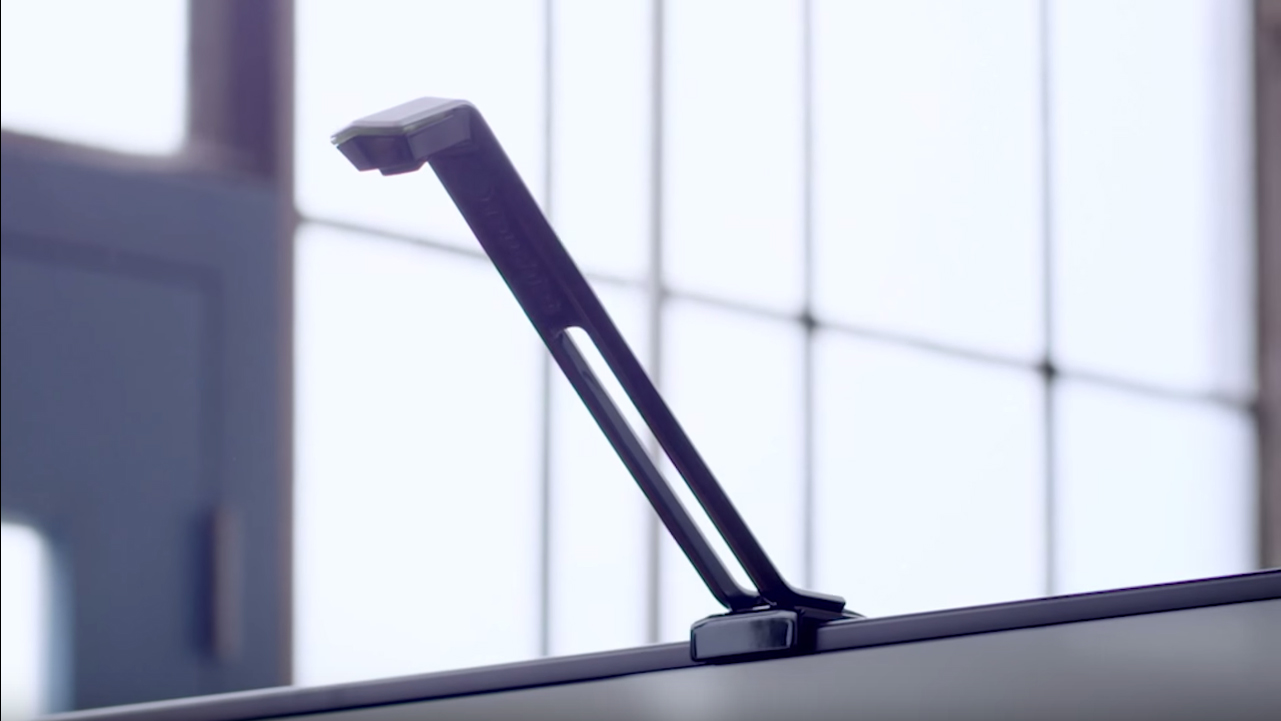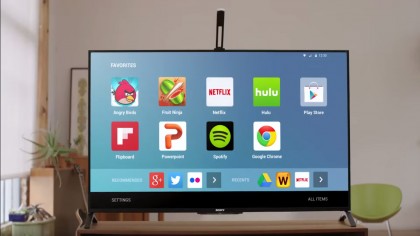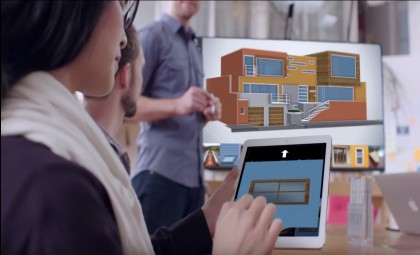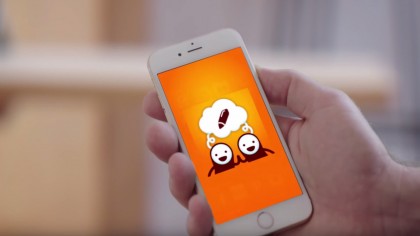
There's big business in creating TV-sized touchscreens. Microsoft, for instance, developed the Surface Hub, a digital whiteboard for conference rooms. It's likely only a matter of time before Apple follows suit with a full-size iPad or Apple TV with a touch-enabled remote.
But Touchjet, the company behind the Pond pico projector, has other plans.
Instead of buying a touch-enabled screen that might be able to function as a standard TV, it plans on turning your tube into a massive Android 4.4 Kitkat-powered touchscreen using the same technology you'd find in your remote.
An infrared sensor is embedded in a camera that sits on top of the TV and plugs into the back of your screen via an HDMI cable. After tracking your finger movements using infrared light, the data is then interpreted by a processor and transformed into touch gestures that Android can process. Once calibrated, the sensor transforms your TV into a digital easel, an office whiteboard or an impossibly large Candy Crush playing field.
The whole setup is called the Wave, and Touchjet's plans are to bring it to market by March 2016 after holding a 60-day crowdfunding campaign on IndieGoGo. The goal is to reach the $100,000 Touchjet needs to refine and enhance Wave's design and feature set.
I spoke to Helen Thomas, an educational entrepreneur and Touchjet's CEO, about the technology, specifically about how it can add to the home entertainment experience and the concerns I had about touching (and potentially damaging) my 60-inch flatscreen at home.
The 'touch everything' generation
The toughest question came first: In a world with Rokus, Apple TVs and Chomecasts galore, what can touch capability possibly add that makes it a viable option over the competition?
Get daily insight, inspiration and deals in your inbox
Sign up for breaking news, reviews, opinion, top tech deals, and more.
Thomas, an affable leader at companies like Leapfrog and LiveScribe before she came to Touchjet eight months ago, responded in turn with a story about her kids.
"This is the experience of the future. It's all interactive, and kids understand touch," she said. "I have two kids myself and everything is under their fingertips today, so why not offer them a larger experience?"
She pointed to games like 2048, Angry Birds and Candy Crush, as well as apps like The Cat in the Hat by Dr. Seuss and Netflix. She sees the potential for children and parents to bond over interactive content, and families to share in a community experience, something that doesn't happen to same extent with other auxiliary home entertainment devices.

Even better, because the system is built on Android instead of a proprietary operating system, it works seamlessly with any of the 1.3 million apps on the Google Play Store. This open ecosystem means little restriction on the content you can choose as well as an abundance of pre-packaged features that you're already familiar with.
The Wave, Thomas believes, will have uses outside the home as well.
Businesses already equipped with flatscreens in conference rooms could utilize the Wave as a presentation tool, highlighting numbers or zooming in on specific areas of a slide, something the Wave can also facilitate.
Sharing, streaming and collaborating in the 21st century
But before businesses can send images to the big screen, they're going to need an app that can facilitate the transferring of files from a phone to Wave.
The app in question is well under way, but wasn't ready to show off during my hands on demo.

The app's purpose is two-fold. First, it's meant to be a collaborative tool, a way to show off family photos at home or presentation slides at the office without relinquishing control of your phone. The second is that if you have control over the Wave from your phone, meaning you won't always need to touch - and smudge - your TV screen.
Thomas understands the hesitancy people might have to touch an expensive television, making an app even more important to the overall experience. In addition to the app, Touchjet is packaging every model with a no-touch stylus that allows you to "write" without having to come in physical contact with the screen.
This desire to give users versatility extends to Touchjet's future plans for the Wave, which include eventually adding in a microphone for voice recognition and a built-in camera for Skype calls. Thomas says that these features are in the works, but the company's focus is first to complete the initial run of units and ship them out to backers as soon as possible.

Touchscreen TVs: the future or a passing fad?
What Thomas can't answer, at least at this point, is how much interest there is for this technology. There are signs that people want it for numerous purposes (why else would Microsoft invest in the Surface Hub or Apple in its touch-sensitive remote?), but the Wave is exploring unknown territory.
My early demo was revealing. Small visual cues like adding a white circle around the spot on the screen where your finger is touching show that real thought has gone into the project, even at its early stage. That said, recognition isn't always perfect and sometimes required me to swipe more than once to get the Wave to register a touch. But the technology is enticing and cutting edge. Toss in voice control and a built-in camera, and Wave could open up a new market for must-own TV peripherals.
The Wave's IndieGoGo campaign runs from August 11 until September 12, and the first batch of sensors can be purchased for $119 (about £76, AU$163). Should Touchjet reach its $100,000 goal, units will ship starting in March 2016.
Nick Pino is Managing Editor, TV and AV for TechRadar's sister site, Tom's Guide. Previously, he was the Senior Editor of Home Entertainment at TechRadar, covering TVs, headphones, speakers, video games, VR and streaming devices. He's also written for GamesRadar+, Official Xbox Magazine, PC Gamer and other outlets over the last decade, and he has a degree in computer science he's not using if anyone wants it.
